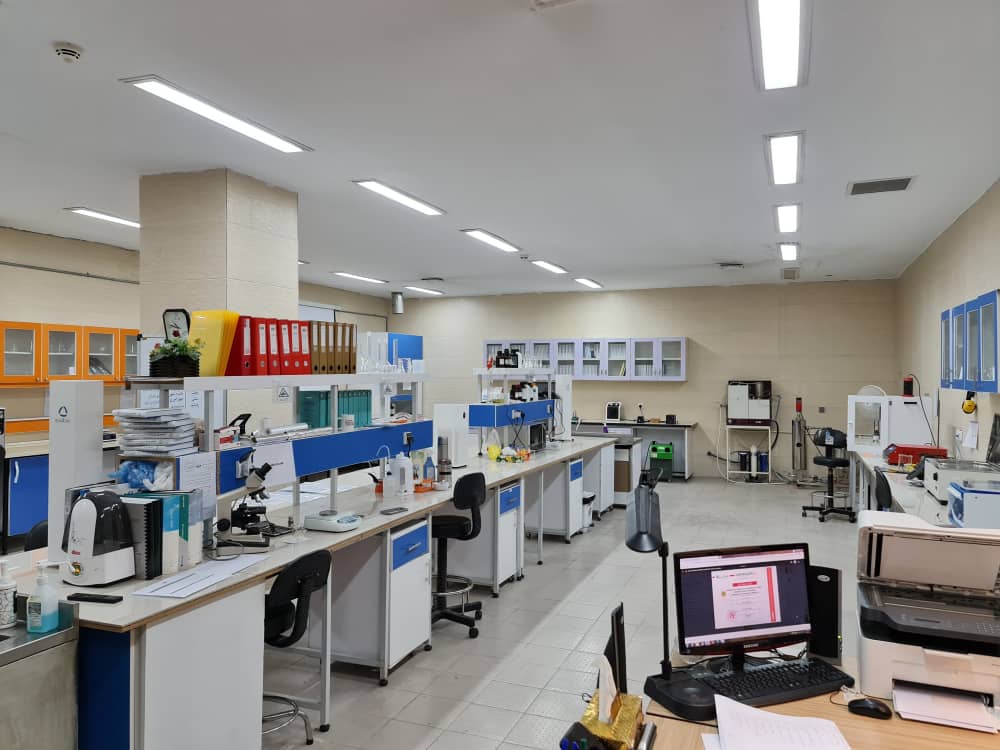Private philanthropic funders of open research and open scholarly outputs have recently been pushing back against traditional research and output sharing mechanisms. In order to improve the open ecosystem, several have updated their output sharing policies to embrace new publishing innovations, and to codify existing sharing practices. Instead of paying for Article Processing Charges (APCs) to support green OA publishing, funders are requiring researchers to share their outputs using preprint servers, where findings can have immediate reach to the public and the research community.
“It’s exciting to see funders taking the lead in changing incentives in how to do open science,” said Emily Ford, director of the Open Research Funders Group. “It’s going to take funder imposed mandates to put pressure on the publishing industry as well as academic and research incentives culture to hasten the adoption of preprint deposit and immediate availability of research outputs.”
This impact story features three open research funders that have made changes that seek to do just that: Howard Hughes Medical Institute, Gates Foundation and Astera Institute.
The Howard Hughes Medical Institute (HHMI)
The Howard Hughes Medical Institute (HHMI) introduced its Immediate Access to Research policy on September 24 to require its scientists to share research as preprints with no restrictions on subsequent use of the publication. It will also no longer pay APCs for hybrid journals.
Even without a mandate, about 50% of HHMI articles were being posted first as preprints – well above the 13% rate for researchers in the life sciences, said Michele Avissar-Whiting, director of Open Science Strategy at HHMI. By requiring HHMI-employed scientists to immediately get their results out under an open license, the hope is to make clear that the journal route is not necessary.
“We want to be able to shift the focus of our assessment process,” Avissar-Whiting said of the preprint serving as evidence for evaluation. “We’re trying to signal and put our money where our mouth is when we say, ‘We’re not concerned with what happens after this point. What we care about is that the record of versions on the preprint server is up to date.’”
HHMI’s current Open Access to Publications policy, launched in 2022, also aimed to make research free to read and reuse, but with a focus on access to articles published by journals.
The new policy is an effort to shift away from traditional publishing, which it describes as “associated with opaque selection procedures, high open access fees, and lengthy publication delays.” The HHMI policy states that it is designed to address these challenges and “encourages a more transparent scholarly ecosystem in which researchers have more control over dissemination of their scholarship.”

The internal announcement indicated that HHMI’s new preprint policy was effective immediately but will be fully enforced from January 1, 2026. Avissar-Whiting said making the new mandate optional initially acknowledges a need for a transition and acclimation to the new process.
In early October, HHMI held a virtual town hall to explain the policy and offer further clarification. The organization also created an internal tool, the HHMI Workspace, to assist researchers in compliance. (Eventually the software will be open source to help others interested in replicating the model.)
For years, HHMI had been considering a preprint policy, and in February 2025, deliberations began in earnest. “The ecosystem started to look like it was ready for this kind of change,” said Avissar-Whiting, who helped lead the process.
HHMI had been a supporter of preprints ever since bioRxiv came online. It has been explicit in encouraging HHMI scientists to publish preprints. The organization even uses a citation format without journal names in its evaluation materials to remove signaling of any prestige linked to publications and to make it clear that alternative publication outlets are acceptable, Avissar-Whiting said.
Studies show that there aren’t often many changes with preprints that are later published in journals. [See Comparing Published Scientific Journal Articles to Their Pre-print Versions, Differences Between Preprints and Journal Articles, and Tracking changes between preprint posting and journal publication during a pandemic.]
To enable compliance with its Open Access to Publications policy, HHMI created its own version of a rights retention strategy. Researchers are required to sign a document that grants non-exclusive licenses to the public and to HHMI for their future work and thus precedes an external contract. This allows people to put their accepted manuscript on PubMed Central, even if they publish behind a paywall. However, few researchers wanted to take that chance, Avissar-Whiting said, so the end result was HHMI giving a de facto endorsement of Gold OA and requiring authors to pay large sums from their budgets for open access fees.
“We want to normalize sharing preprints and always make that the first step in the publishing process,” Avissar-Whiting said. “Only then can you start to really experiment with the more transparent models that we’re really interested in socializing within the scientific community.”
As HHMI lends its support and incentive to preprints, the hope is that researchers will come on board, as well as other large organizations, she said.
“It always helps when you can see allyship,” Avissar-Whiting said. “The more people see news of these policies, the more you realize there is momentum around it.”
Science is a different domain than business, Avissar-Whiting said, and the system should change to emphasize not only sharing articles openly, but also data, code and protocols. Also, negative results need to be acknowledged to help inform research.
“We want science to be unencumbered and available to be readily scrutinized as authors decide that it is ready – to put that power back in their hands,” she said. “I hope that resonates with other funders. The ultimate goal is to speed up the pace of discovery.”
***
The Gates Foundation
The Gates Foundation has updated its Open Access Policy, going all in with preprints and stopping its practice of covering individual article publishing fees.
A longtime leader in this space, Gates first adopted its OA policy in 2015. The changes, which were announced in March 2024, reflected a natural progression of its policy and were needed to align with the foundation’s values, said Ashley Farley, senior officer in Knowledge & Research Services of Global Health at Gates.
“We know that APCs are not equitable, so that was a big driver,” she said. “We wanted to stop paying these and perpetuating a harmful system – but we want open access, so preprints are a perfectly viable venue.”
Gates has its own preprint service, added Farley, so it’s easy for researchers to comply.
For the past decade, Gates has spent about $6 million each year in APCs to ensure that its research was published in open access outlets.
“The equity piece that was most compelling to try to make the shift,” Farley said. “Nobody understood why we’re spending so much money to get so little in return.”
Farley proposed the changes and worked to get leadership on board. The foundation spent time reviewing the policy, which went through several iterations.

Gates had last revised the policy in 2021 when it joined Coalition S. Farley said the foundation learned from that experience many lessons, including that it did not want to pay to publish in hybrid journals. It’s hard to measure the impact in advancing open access that having 3,500 articles be made open access during the time of the then policy.
The vision with the refreshed policy was to foster a publishing ecosystem that is equitable and inclusive.
Once there was agreement, the foundation announced the change in a blog: Who Loses When Scientific Research is Locked Behind Paywalls? Announcing our expanded policy for open access to scientific research, after a decade of experience and learnings. Author Estee Torok, a Gates senior program officer, explains the journal costs are too high for many labs and that it’s critical for researchers to build upon what others have learned to make scientific advances and solve the world’s health challenges most quickly.
“We realize that this policy change won’t remove all hurdles to open access. But after conducting considerable research into this issue, including discussions with our grantees and with other scientists and advocates, we believe it’s one more step in the right direction,” Torok writes.
[See Farley’s article about the process, A decade of open access policy at the Gates Foundation based on experimentation, in a publication by Ubiquity Press]
The foundation got the word out to grantees with webinars and various outreach. The move has gotten attention of the scientific community and serves as a signal to others.
“I really hope that other funders, and especially institutions, follow suit and stop seeing the only way to achieve open access as being through the journal version of record,” Farley said. “I hope we abandon that and we come through with a much better, more technologically forward, equitable system. The way we publish is so archaic. I think it’s a complete reimagining of how we disseminate and collaborate with research.”
***
The Astera Institute
The Astera Institute’s new Open Science policy prohibits researchers from using its funds to contribute directly to the creation of journal articles. Instead, the San Francisco Bay Area-based nonprofit is encouraging use of preprints, nanopublications and other open outlets in ways that remain discoverable and persistent.
“We envision a future in which all research outputs are shared rapidly and openly,” the policy states. “The journal publication system is fundamentally unfit for this purpose and is a relic of the past.”
Adopted in May 2025, leaders say the policy was driven by the organization’s values.The hope is that by steering scientists away from a focus on journal publications, they will make data and outputs available as soon as it is useful to others. Any public claim would be backed up by public data that adheres to the FAIR principles.
One of several projects that Astera has supported in its Open Science Fellowship program, Cosmik, is related to nanopublishing. Astera embraces the idea that a publishable unit can be small – just a snippet of knowledge with metadata that is machine-interpretable. The organization wants to support work that will be released and reviewed more openly, comprehensively, and frequently than with the current system.
The policy is designed as an “intentional forcing function” for Astera residents and researchers to help develop a “post-journal” world, to imagine how to share their science and gain benefits that are superior to working within the journal system. Often journal publication is the default choice. By prohibiting the use of journals, the hope is the policy will promote exploration and experimentation with different modes of sharing research.
[See Substack blog: Scientific Publishing: Enough is Enough. Why we’re no longer funding journal publications by Astera’s Seemay Chou.]
“Many funder policies focus on the use of their funds for journal fees. Ours is explicit in also prohibiting Astera-funded research time for journal activities,” said Prachee Avasthi, head of Open Science at Astera. “This not only recognizes the immense cost of reviewer back-and-forth and journal shopping but, more importantly, that science looks fundamentally different when geared towards innovation and advancement rather than editorial outcomes.”

Astera presented the policy to its researchers at an in-person workshop and the Open Science team talked with fellows and grantees individually. Many were excited, but some raised concerns about how they would gain visibility, feedback and credibility under the new approach. Astera is working on ways to address these issues by providing recommendations to grantees on where to get open peer review of their science, supporting travel to conferences, and encouraging labs to share information that would enable reproducibility.
Astera recognizes the challenge can come with pushing against the status quo for publishing. “In the absence of proxies for quality (journal titles or impact factors, for example) demonstrating reach and impact are more difficult,” the policy states. “But the substance of quality and rigor is more important than the appearance of it.”
Since Astera is a relatively new organization, the Open Science team said it has been easy to adopt a bold policy. More broadly, Astera would like its policy to stimulate conversations at different organizations about what’s possible – and other funders have reached out to learn more about its development.
#